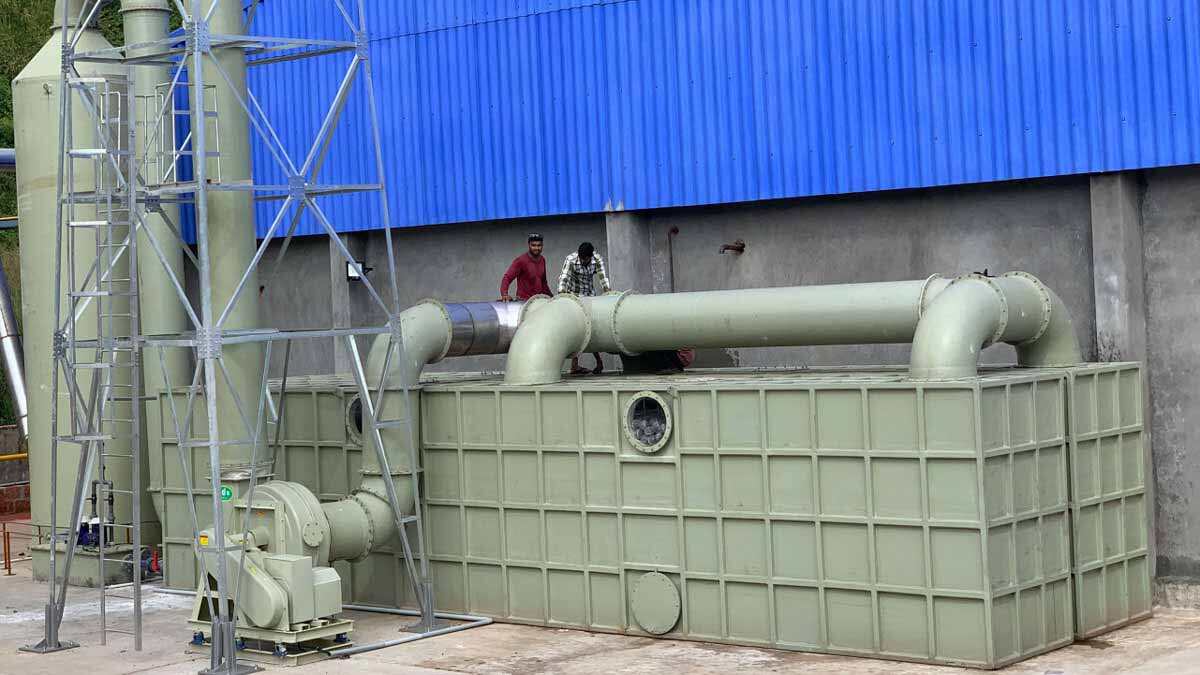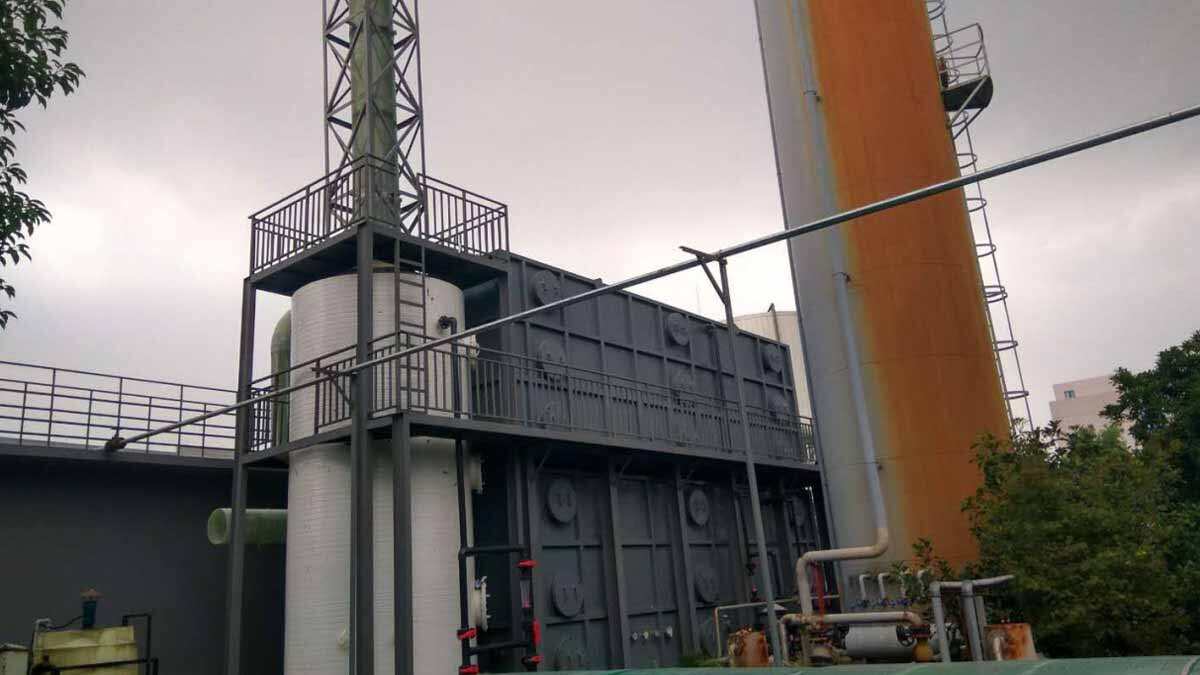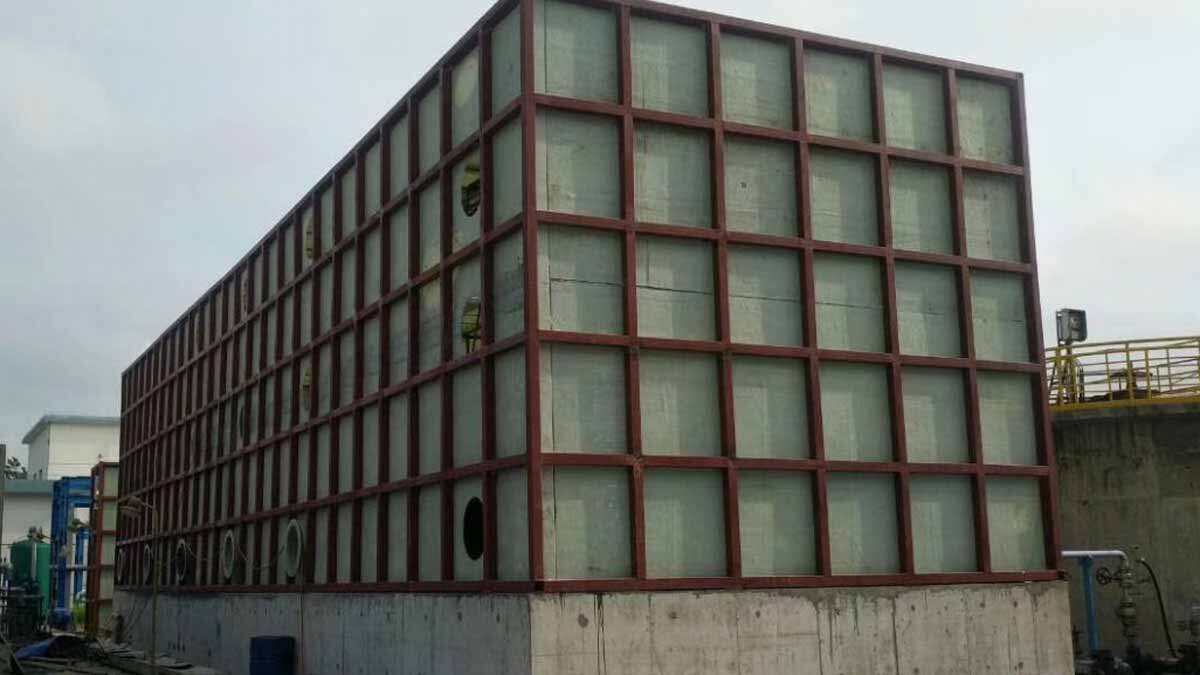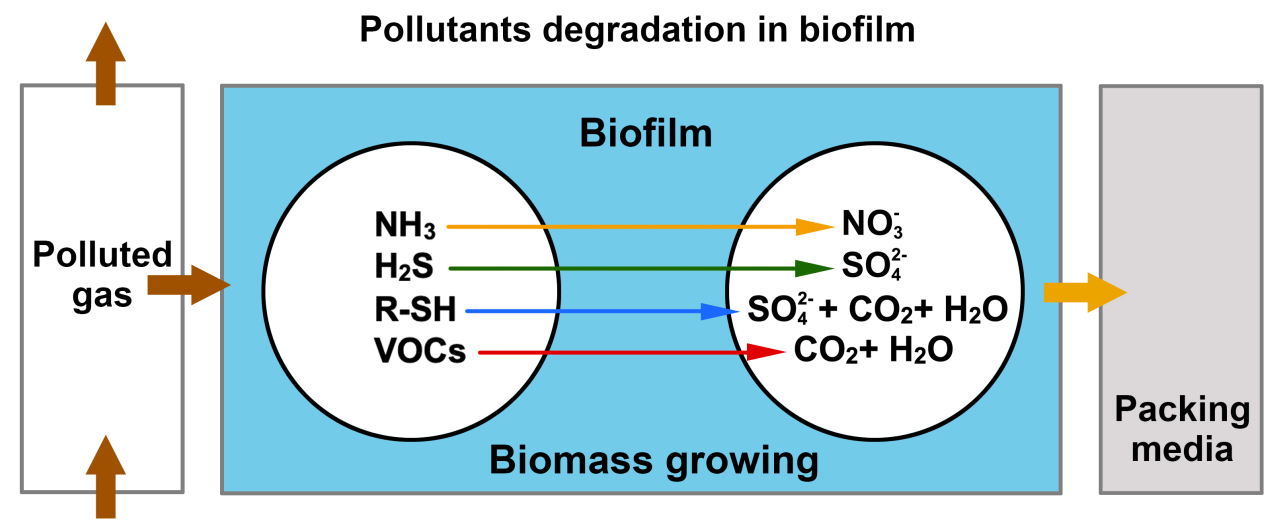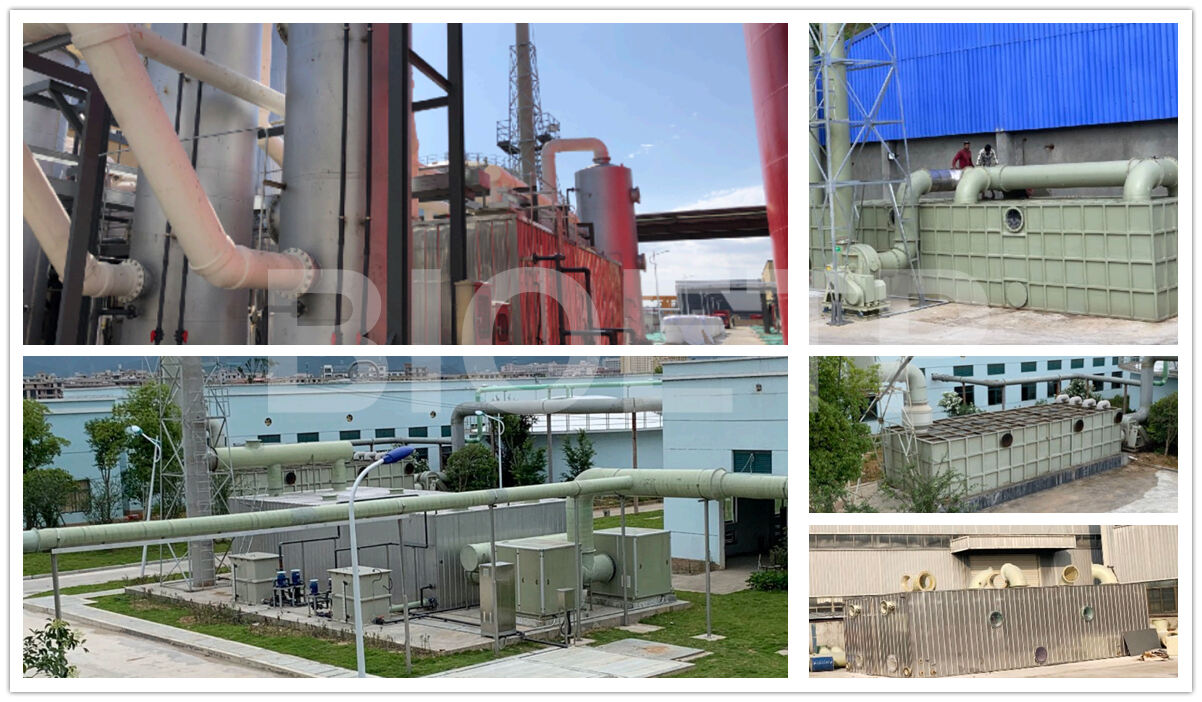Biofiltration for VOCs and Odors abatement
Introduction:
biofiltration for waste gas streams containing VOCs and odorous compounds is more cost effective and environmental-friendly than conventional air pollution control technologies.In a biofilter, the pollutants are biologically degraded by aerobic microorganisms to stable end products like CO2, H2O, sulfate, microbial biomass, etc.
Application:
biofilter has been proved its high efficiency to remove pollutants from gas exhausts, which are generated from livestock breeding and poultry raising industry, food processing industry and wastewater treatment plant. Its cost effective and simply maintenance makes the biofilter world-wide popular.
